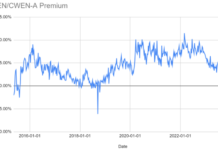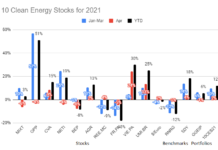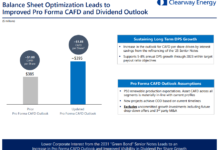by the Climate Bonds Team
Halfway in 2016: Issuance Up on 2015: New Underwriters from China: And Where Will Green Bonds Land by Dec 31st?
The Headline Figures:
- At the end of Q2, issuance for 2016 stood at USD 34.6bn – bringing it close to the total issuance for 2015 with 6 months of the year to go.
- In the first two weeks since the end of Q2 – total issuance surpassed the 2015 total. We expect even more in the second half of the year.
- USD 18.6bn issued in Q2 alone making it the highest single quarter of green bond issuance on record.
- Over USD 4.5bn in Certified Climate Bonds – it has been a record breaking year for Certification, with bonds from issuers in India, Australia, Germany, Netherlands, the US and Philippines
- 65% of issuance received reviews or certifications from external parties representing good practice in accordance with the Green Bonds Principles.
- New issuers accounted for approximately 54% of issuance. This includes some of the record breakers such as Shanghai Pudong Development Bank– a sign of a growing and diversifying market[1]-and the emerging momentum in China.
- Repeat issuers are returning –making up approximately 46% of issuance, in the first two quarters. Repeats are a good indicator that the issuance process is worth the additional disclosure and reporting requirements.
- Green bonds are not just a one-off exercise, reflected by the repeat issuance. They are an increasingly important tool to attract investors and capital.
- Issuer breakdown has changed from Q1 to Q2 with banks making up a smaller proportion of the market and corporates dominating – this is due to large issuances totalling over USD 5bn from Shanghai Pudong Development Bank in Q1. In Q2, over 20 corporates issued bonds ranging from USD 28m – USD 1.6bn (Toyota)
- Our league table shows Bank of America leading Q2 issuance, closely followed by JP Morgan and Citi.
- Q1 was the first time we saw Chinese underwriters contesting for top 10 spots. The year as a whole is taking on a different composition due to the entrance of Chinese underwriters in Q1.
- China growing larger in the green bond story – the first half of the year saw Chinese issuers issue over USD 8bn in green bonds; including large issuers such as Shanghai Pudong, Industrial Bank and others. This number has increased even more in the start of Q3. We have not included all Chinese bonds in our numbers – more detail below.
- Muni bond issuance remained flat from Q1 to Q2 but continues to make up an important part of the market. Issuance is dominated by US municipalities; a trend that is likely to continue given the size and maturity of the US municipal bond market and the need to replace aging infrastructure.
Will 2016 total issuance reach the Climate Bonds Initiative goal of $100bn? We’ll have more to say on this in a coming Blog. Stay tuned for the biggest Green Bond question in 2016.

Underwriter League tables for Q1 & Q2
Our league tables show Bank of America and JP Morgan in first and second place for both Q2 and for the first 6 months of the year.
Chinese underwriters Guotai, Haitong and Huatai entered our league tables for the first time in Q1 this year and we expect them to continue challenging for the top spots.

China has set the bar – now what?
The People’s Bank of China (PBoC) published official green bond guidelines in December 2015 and since then, we’ve seen a LOT of new bonds from Chinese issuers; over USD 8bn in the first half of the year and another USD 5bn in Q3 so far.
Given the importance of China in global climate change action, these developments are hugely encouraging – particularly the scale of investment being diverted to green activities.
However, criteria around what is classified as green have some controversial aspects to them; leading to differences between local market and internationally accepted best practices.
For the moment, the ‘green definitions’ sanctioned by China’s PBoC includes investments such as ‘clean’ coal. While clean coal is cleaner than regular coal, helps reduce air pollution, it is excluded in international definitions used by investors concerned about climate change, who believe it needs to be avoided in a rapid shift to a low-carbon economy.
Why? Well… the steepness of the emissions reduction needed to hold global warming at 2°C means that coal in any form is excluded from international green bond definitions.
This is because improvements in the emissions efficiency of coal fired power plants have the perverse effect of extending the life of these assets, beyond the point at which we will need to close them down to meet global carbon budgets – it makes the overall transition harder.
As a result, you will see some differences between the Chinese green bond totals (as consistent with local regulation) and those Chinese green bonds that are brought into global green bond listings.
We aim to keep monitoring the reporting from China; we’ll update you on developments.
Rounding Out the Mid-Year Round Up
The acceleration of the market has been noted by commentators, as has the rise of China and India, developments long foreshadowed by Climate Bonds Initiative amongst others. What’s also of interest in the first half of 2016 is the diversification of market participants, issuers, underwriters and verifiers.
Behind this headline market growth, lower in prominence but no less important, is the regulatory developments in China and India; the laying of firmer foundations for global investors to take greater exposure in these markets.
In the post COP21 and now COP22 shift of focus from agreement making to implementation, green bonds are increasingly being highlighted as part of converting country commitments (NDCs) to climate finance actions.
However, the first 6 months of figures are encouraging rather than exhilarating. The recently released Climate Bonds State of the Market 2016 Report demonstrates again the scale of investment needed to meet global temperature goals.
Green finance is firmly on both the G20 and COP22 agendas. What will their influence be on green bond development for the remainder of 2016 and beyond?
We’ll keep you posted!
‘Till next time,
The Markets Team
Note: Climate Bonds League Table figures may differ to other sources for the following reasons:
- Only bonds with 100% proceeds for green projects (as defined by the relevant Criteria of the Climate Bonds Standard) are included
- All green municipal bonds are included
- Date of issuance is used to determine Quarter (not announcement date)
- USD exchange rate is taken from the last price on the date of issuance
- Amount attributed to each issuer is calculated by dividing the total deal si
ze by the number of lead underwriters on the deal.
Disclaimer: The information contained in this communication does not constitute investment advice and the Climate Bonds Initiative is not an investment adviser. Links to external websites are for information purposes only. The Climate Bonds Initiative accepts no responsibility for content on external websites.
The Climate Bonds Initiative is not advising on the merits or otherwise of any investment. A decision to invest in anything is solely yours. The Climate Bonds Initiative accepts no liability of any kind for investments any individual or organisation makes, nor for investments made by third parties on behalf of an individual or organisation.
[1] Note: Despite having ‘development’ in its title, SPDB provides commercial and retail banking services and is classified as a commercial bank by international industry classification standards
The Climate Bonds Team includes Sean Kidney, Tess Olsen-Rong, Beate Sonerud, and Justine Leigh-Bell.
The Climate Bonds Initiative is an “investor-focused” not-for-profit promoting long-term debt models to fund a rapid, global transition to a low-carbon economy.









